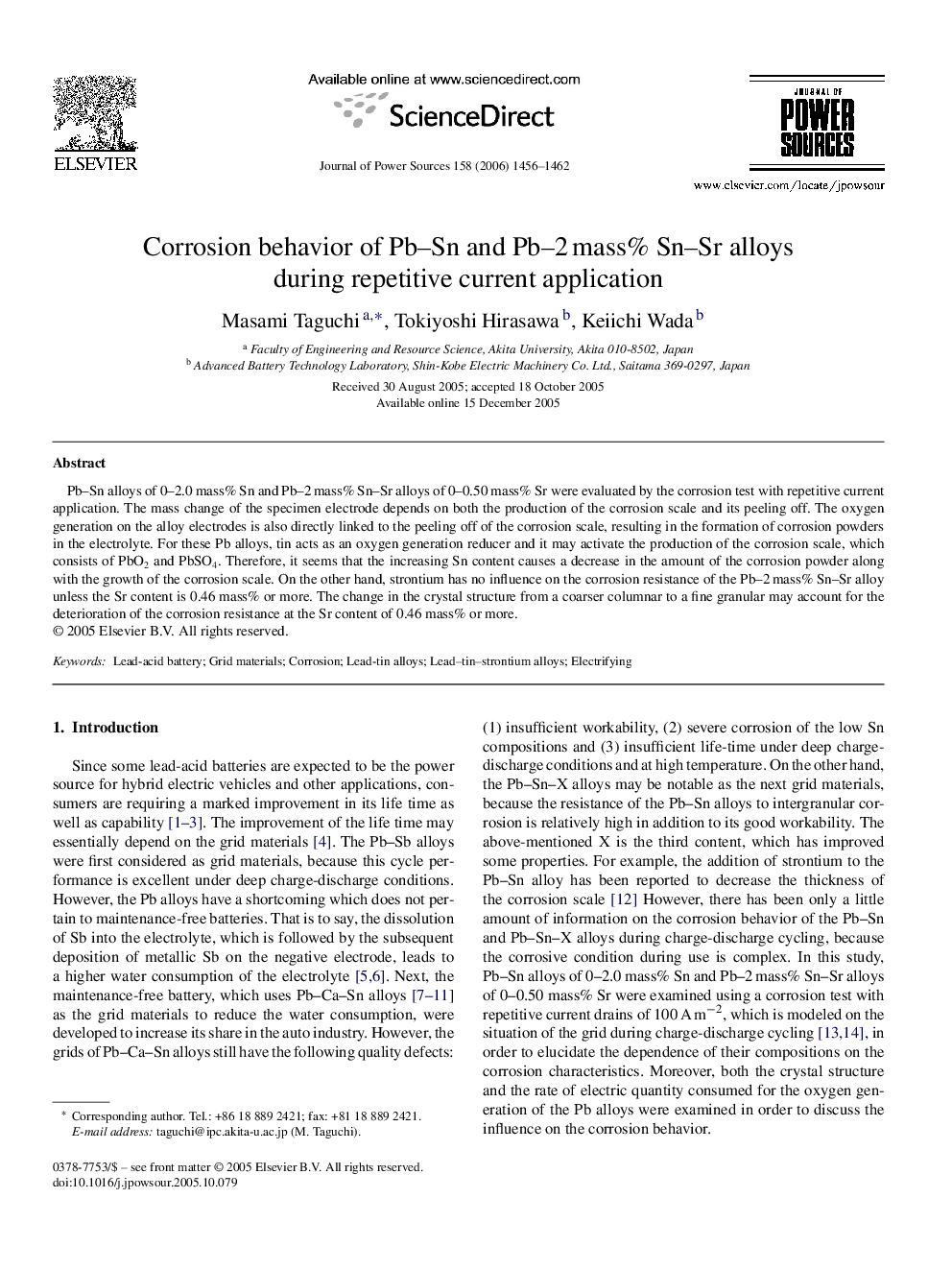| Article ID | Journal | Published Year | Pages | File Type |
|---|---|---|---|---|
| 1287427 | Journal of Power Sources | 2006 | 7 Pages |
Abstract
Pb-Sn alloys of 0-2.0 mass% Sn and Pb-2Â mass% Sn-Sr alloys of 0-0.50 mass% Sr were evaluated by the corrosion test with repetitive current application. The mass change of the specimen electrode depends on both the production of the corrosion scale and its peeling off. The oxygen generation on the alloy electrodes is also directly linked to the peeling off of the corrosion scale, resulting in the formation of corrosion powders in the electrolyte. For these Pb alloys, tin acts as an oxygen generation reducer and it may activate the production of the corrosion scale, which consists of PbO2 and PbSO4. Therefore, it seems that the increasing Sn content causes a decrease in the amount of the corrosion powder along with the growth of the corrosion scale. On the other hand, strontium has no influence on the corrosion resistance of the Pb-2Â mass% Sn-Sr alloy unless the Sr content is 0.46 mass% or more. The change in the crystal structure from a coarser columnar to a fine granular may account for the deterioration of the corrosion resistance at the Sr content of 0.46 mass% or more.
Keywords
Related Topics
Physical Sciences and Engineering
Chemistry
Electrochemistry
Authors
Masami Taguchi, Tokiyoshi Hirasawa, Keiichi Wada,
